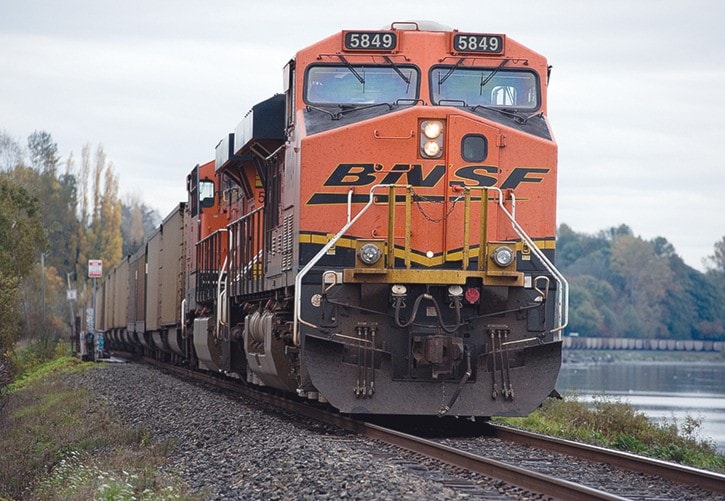The proposal to relocate the BNSF train line inland from White Rock and South Surrey waterfronts – subject of a joint forum hosted by White Rock and Surrey civic leaders Nov. 26 – merits sober-minded consideration.
Naysayers argue the money it would take – projected at $350-$400 million by the most optimistic estimates – might be better spent elsewhere.
Indeed, if such money can be found, uncommitted, on a federal, provincial or local level, a similar expenditure might make a significant difference to health care in the region, or go a long way to fixing our currently-broken public-transportation system.
Nonetheless, the proposal opens intriguing discussion on long-term initiatives to make the Semiahmoo Peninsula a better, more logical and, ultimately, safer community.
In this context, we should be looking at more than relocating the railway.
There are many more instances in which judicious planning could right some wrong turns the community has taken over the years.
Highway 99 is, for example, a poor and circuitous route into Vancouver for Peninsula residents, taking them on a picturesque but unnecessary detour through Delta and Richmond on the way to their objective.
It also effectively cuts the Peninsula in half, creating numerous no-through roads in what have become burgeoning residential areas. Even the new interchange at 16 Avenue does little to alleviate this disconnect.
Surely, given the way that population has evolved in South Surrey, it would make more sense to beef up 176 Street with extra lanes, making it the major connector from the international border to the newly-twinned Port Mann Bridge.
While this might entail the expenditure of many more millions of dollars in terms of land acquisition, soil studies, engineering and construction, routing heavy traffic away from more populous areas would be a win for all concerned – and a chance to protect the public in perpetuity.
Similarly, King George Boulevard, while admittedly of some historic significance, has outgrown its usefulness as a major people mover.
It has also been the scene – one might even say the cause – of numerous traffic fatalities over the years. It is sobering to contemplate that even one major accident with one of the many semi-trailer trucks that carry hazardous materials daily on either Highway 99 or King George Boulevard could create a disaster of monumental proportions for Surrey.
Meanwhile, congestion on the two-lane Marine Drive through White Rock during the summer months, as an influx of noisy tourists looking for parking combines with the year-round presence of large trucks making deliveries to waterfront restaurants and pubs, does more than create a nuisance for newly-arrived hillside residents – it also poses a health and safety hazard that can’t be ignored.
It’s time we gave serious thought to moving these businesses uphill to Uptown White Rock – where they’re likely to get more year-round traffic, anyway – or even beyond, to Grandview Corners or Morgan Crossing.
And while we’re talking about a relocation of the BNSF line, wouldn’t it also make sense to move the old White Rock Station building (currently the White Rock Museum and Archives) – which surely has no connection to a proposed network of walking trails – away from the waterfront, where it impedes views of Semiahmoo Bay?
It can also be argued that the White Rock Pier, likewise, is a relic of the early 1900s, and ambitions of major port status for the city at that time have little relevance to residents today.
Constantly decaying and costly to maintain, it has clearly outlived its usefulness – as well as creating the potential for pedestrians to fall into the water.
Of course, these ideas are but drops in the bucket. Think hard, and I’m sure we could come up with more improvements to the community we call home.
Alex Browne is a Peace Arch News reporter.
